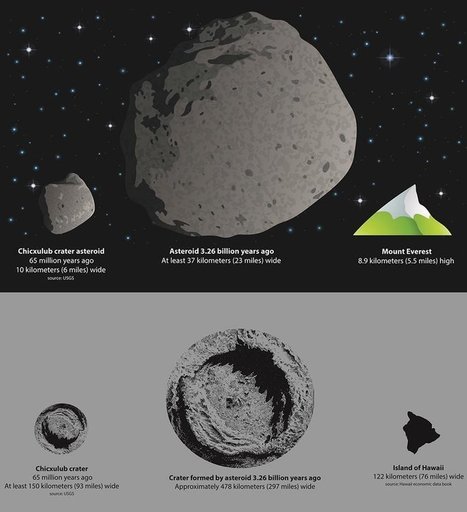This Asteroid Impact Dwarfed the Dino-Killer
(American Geophysical Union)
The faint form of the Chicxulub crater on Mexico's Yucatán Peninsula is one of the most famous pieces of evidence that a massive impact wiped out non-avian dinosaurs about 65 million years ago. But at 93 miles wide, Chicxulub wouldn't hold a candle to a whopping crater that likely formed on Earth about 3.26 billion years ago, during the Archean Eon. Erosion and plate tectonics have since wiped away any craters from so long ago, but scientists saw other signs of an impact in the Barberton greenstone belt in South Africa. This rock contains beds of small structures called spherules, created when the rock vaporized and then condensed. The bed also shows evidence of strong seismic shaking associated with an impact. Using examples of rock deformations from lunar craters, scientists at Stanford University modeled the size of the impact needed to create these features in the greenstone belt. The data, published in April in Geochemistry, Geophysics, Geosystems, suggest that the extreme event formed a now-vanished crater that spanned 297 miles.
Research and publish the best content.
Get Started for FREE
Sign up with Facebook Sign up with X
I don't have a Facebook or a X account
Already have an account: Login
If it's Innovation it's here! https://officialandreascy.blogspot.com
Curated by
THE OFFICIAL ANDREASCY
 Your new post is loading... Your new post is loading...
 Your new post is loading... Your new post is loading...
|










